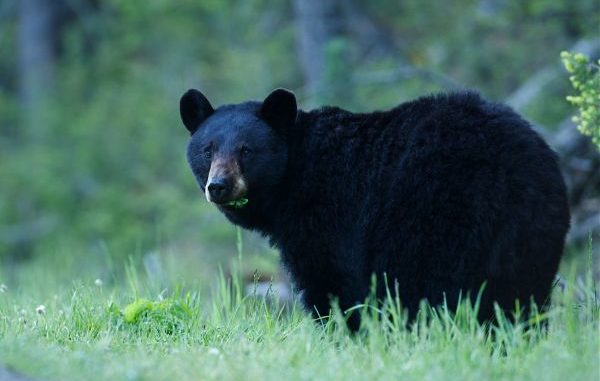
Basic harvest guidelines outlined if bears are eventually not federally protected
A comprehensive black bear management plan, including provisions for a potential harvest if federal protection is one day deemed unwarranted for the animal, was presented to the Louisiana Wildlife and Fisheries Commission on Thursday.
Maria Davidson, large carnivore program manager for the Louisiana Department of Wildlife and Fisheries, said she and her department worked for almost 18 months on developing the 75-page document, which also includes a history of the bear, conservation and management plans, economic and ecological impacts of the animal for the state and a status report on the four distinct subpopulations of black bear living here.
“I think it’s always going to be somewhat of an adaptive management style,” Davidson said of the plan. “Bear populations in Louisiana are not going to remain the same. They’re going to change over time, so what is a state-of-the-art, hot-off-the-press plan today will become old hat within six or seven years.
“It’s going to have to be adaptive, so we will have to change it as the need arises.”
Under the plan, the state is divided into seven separate regions, or Bear Management Areas, which Davidson said will allow the department to manage the separate bear populations differently.
“As we go about our management activities, with trapping and marking, we mark them according to their geographic origin using their BMA,” she said. “As they turn up somewhere else, it allows us to monitor range expansion and corridor movement, things like that.
“Obviously, not all BMAs are the same, and you wouldn’t want to treat them all the same when it would come time for a harvest.”
To be legally hunted, the animal would have to be de-listed as a protected species, which is a process done by the U.S. Fish and Wildlife Service, she said.
“The timeline is not something we’re in any way, shape or form in control of, because it’s not our process,” Davidson said. “But I don’t think we’re looking at five years. I don’t think it’s that far away.”
If and when a harvest season were to happen, the plan lays out some of the basic framework for how it would work.
“At no time would harvests be allowed if existing data and simulated population dynamics models indicate harvest could potentially compromise Louisiana black bear sustainability,” the plan states. “A quota system would be used within a lottery framework to select hunters for bear harvest tags. If implemented, harvest may or many not occur on all private or public lands within an individual BMA.
“A mandatory black bear hunting training course would be required for all hunters selected for a bear harvest tag. Harvests would be monitored by LDWF, reserving the right to revoke tags and cancel harvest seasons at any time.”
Davidson wouldn’t speculate on the number of bears that potentially could be harvested in a season because of unknown factors that could influence their population from year to year, including disease, natural death, illegal kills by hunters, being hit by cars and other causes.
“We have a pretty valid statistical harvest model we can use that would enable us to do a couple of things,” she said. “We can put in there what percentage of the population we think we want to make available for harvest, or we can go about it a different way. Because it’s a mathematical formula, we can say this is what we want to end up with – we want to end up with a population that’s continuing to grow at this percentage and continuing to have this percent chance of persistence, and enter that into a model, and it will spit out ‘X’ number of tags.
“it gives you a lot of flexibility.”
To view the entire black bear management plan, click here.
Public comments on the plan will be accepted through March 6, and can be sent to Maria Davidson by clicking here.


